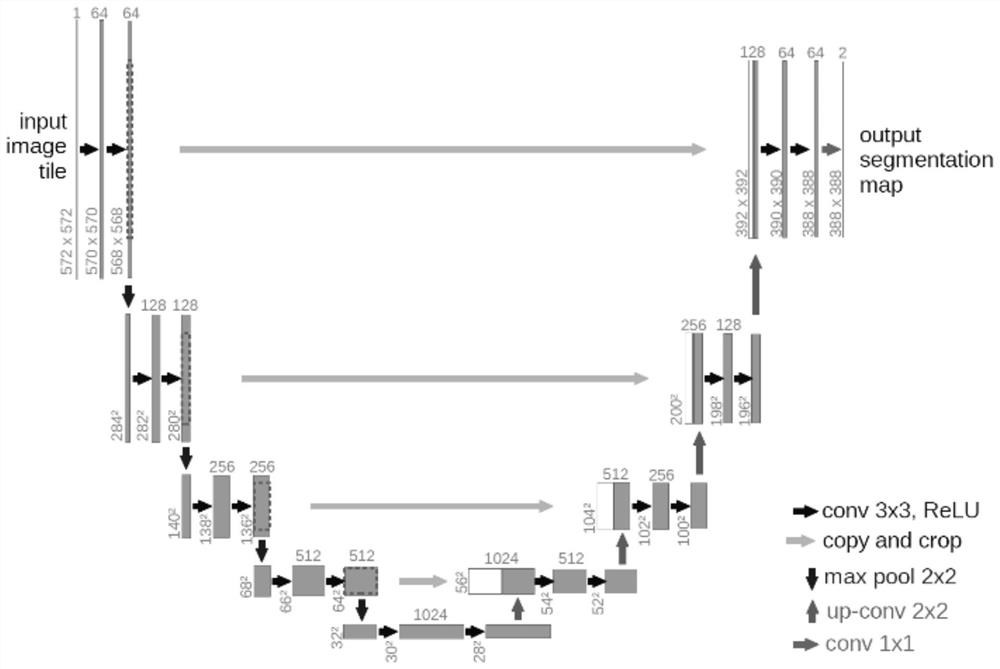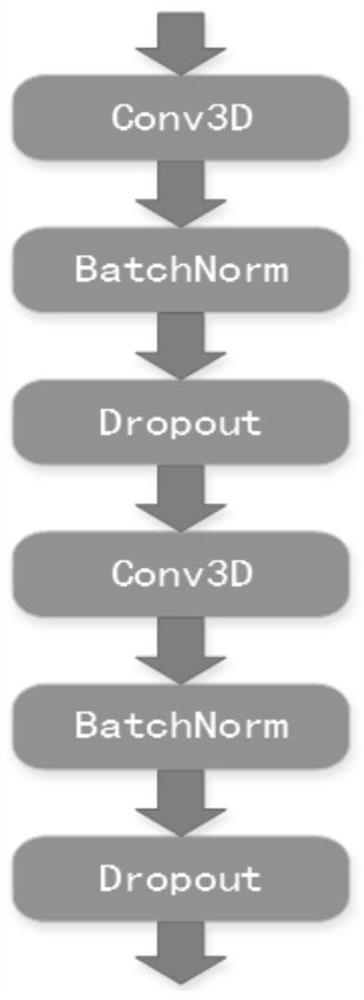U-Net kidney tumor image segmentation method and device based on aggregation interlayer information, and storage medium
A kidney tumor and image segmentation technology, applied in image analysis, image enhancement, image coding, etc., can solve the problems of complex 3D model structure, prone to overfitting, and high hardware requirements, so as to improve the segmentation accuracy and reduce hardware. Requires, enhances the effect of features
- Summary
- Abstract
- Description
- Claims
- Application Information
AI Technical Summary
Problems solved by technology
Method used
Image
Examples
Embodiment 1
[0071] A U-Net kidney tumor image segmentation method based on aggregated inter-layer information, such as figure 2 shown, including the following steps:
[0072] 1) Image acquisition;
[0073] 2) Image preprocessing;
[0074] Set the window level and window width, remove the noise interference in the incoherent area of the CT image obtained in step 1), and keep the brightness and contrast of the kidney tumor image consistent through histogram equalization, normalization and standardization in turn;
[0075] 3) Build tags;
[0076] Construct corresponding labels for the preprocessed images obtained in step 2); prepare for the training and testing of the input network in the next step. The number of input labels is 3 consecutive slices, only the slice in the center is the target slice, and the other two input slices are used as auxiliary slices to provide spatial information.
[0077] 4) Build a U-Net model that aggregates inter-layer information;
[0078] The U-Net mod...
Embodiment 2
[0088]A U-Net kidney tumor image segmentation method based on aggregated inter-layer information according to Embodiment 1, the difference is:
[0089] The U-Net model for aggregating inter-layer information is based on 3D networks and 2D networks. like Figure 4 As shown, the U-Net model that aggregates inter-layer information includes an encoder-decoder network, and the encoder-decoder network includes an encoder subnet and a decoder subnet. The encoder subnet performs feature extraction and applies 3D convolution to utilize Inter-layer information, the network uses the information provided by the encoder subnet to restore the image size and perform semantic segmentation in the decoder subnet; through the decoder subnet, 2D convolution is used to reduce the size of the network to predict only a certain slice;
[0090] The encoder subnet is divided into four layers with a downsampling at the end of each layer; the resolution is decreased and the number of feature images is d...
Embodiment 3
[0101] The kidney tumor image segmentation method based on the U-net network of aggregated inter-layer information according to Embodiment 1 or 2, the difference is:
[0102] In step 1), image acquisition refers to: using ITK-SNAP to read the data set of the KiTS19 Challenge to acquire CT images. Figure 5 Image diagram for the KiTS19 Challenge dataset.
[0103] In step 1), image preprocessing aims to improve the precision and accuracy of the processing algorithm in the next stage, including:
[0104] A. Window truncation:
[0105] The window level is the center of the CT value range. If the CT value range is set to [a,b], the window level is equal to (a+b) / 2;
[0106] The window width represents a relative range, set as [a, b], which represents the CT value range of the image; when a tissue area is observed clinically, the window level will be set as the CT reference value of the tissue, and then different windows will be adjusted to adjust Wide, display, observe the condi...
PUM
 Login to View More
Login to View More Abstract
Description
Claims
Application Information
 Login to View More
Login to View More - R&D
- Intellectual Property
- Life Sciences
- Materials
- Tech Scout
- Unparalleled Data Quality
- Higher Quality Content
- 60% Fewer Hallucinations
Browse by: Latest US Patents, China's latest patents, Technical Efficacy Thesaurus, Application Domain, Technology Topic, Popular Technical Reports.
© 2025 PatSnap. All rights reserved.Legal|Privacy policy|Modern Slavery Act Transparency Statement|Sitemap|About US| Contact US: help@patsnap.com



